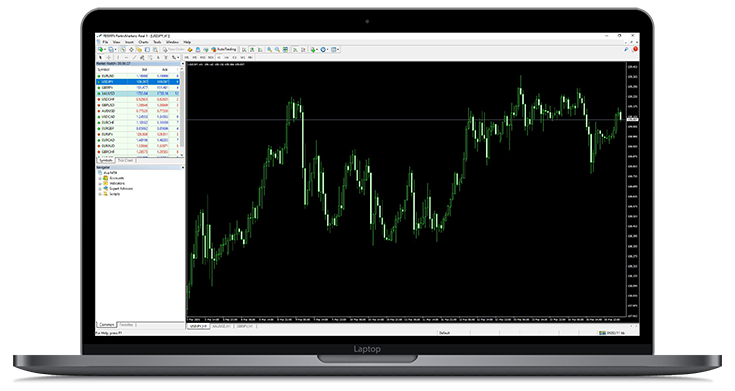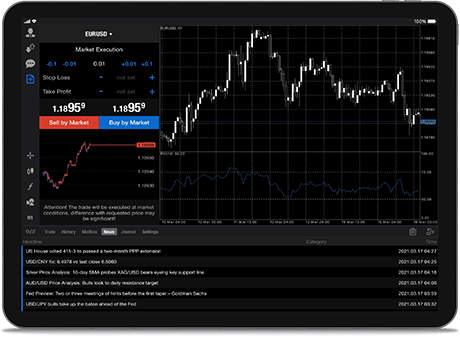Welcome to the crazy, migraine-inducing world of Forex trading; the market that never sleeps and occasionally eats traders alive for breakfast. With over $7 trillion sloshing around daily, it’s the biggest and loudest casino in town (except this one doesn’t give you free drinks while you lose money).
The problem? Forex has its own language, and if you don’t speak it, you’ll feel like a tourist trying to order food in Budapest knowing only three words of the local lingo and a lot of hand gestures. That’s where this guide comes in. We’re going to cover 30 forex terms every trader should know and w will explain it in plain English.
So, strap in here we go……….
1. Currency Pair
Every forex trade involves two currencies battling it out, like two drunk guys arguing over who’s paying the kebab bill. The first currency is the base currency, and the second is the quote currency.
Example: EUR/USD. Here, the euro (EUR) is the base, and the U.S. dollar (USD) is the quote. If EUR/USD is trading at 1.15, that means you need $1.15 to buy €1. Simple enough…sure, until it starts moving against you.
2. Base Currency / Quote Currency
The base currency is the first one in the pair, it’s the star of the show. The quote currency is the second one, the sidekick who decides how much you’re going to suffer.
Example: GBP/USD = 1.35.Translation: To buy £1, you’ll need $1.35. Or, in trader-speak, “The pound is way too expensive at the moment”.
3. Leverage
Leverage is basically trading with borrowed money, like buying 10 drinks when you have only got enough for one, hoping your future self can pay for it. Brokers love offering leverage because it makes you feel powerful. You can control huge trades with a tiny deposit.
The snag? It amplifies your wins and your losses. While you could double your money, you could also blow your account before you’ve finished your first coffee.
4. Bid / Ask Price
The bid is the price buyers are willing to pay. The ask is the price sellers want. The difference between the two is called the spread, and it’s basically the broker’s way of charging you rent for playing in their playpen.
Example: Telsa stock might show:
● Bid: $330
● Ask: $333.40
If you sell, you get $330.00. If you buy, you pay $333.40. That a 40-cent difference you ask? That’s the market smiling at you.
5. Exchange Rate
The exchange rate tells you how much of one currency you need to cough up to buy another. It constantly changes based on supply, demand, economics, and political chaos (of which there’s never a shortage).
Example: You travel to Japan with $1,000. If the exchange rate is 1 USD = 150 JPY, you get ¥150,000. If it later shifts to 1 USD = 145 JPY, congrats — your $1,000 now gets you less Sushi. Traders live and die by these fluctuations.
6. Margin
Margin is the amount of money a trader must deposit with their broker in order to open a position in the market. The trader essentially makes a deposit to show that they can cover the potential losses.
7. Pip
A pip is the smallest unit of price movement in forex. It usually lives in the fourth decimal place (except the Japanese yen, which stops at two decimal places).
Example: EUR/USD moves from 1.2000 to 1.2001 → that’s one pip.
In real money terms, one pip in a standard lot often equals $10. Which means 100 pips can make you $1,000… or cost you $1,000. A pip can feel tiny until a swarm of them wipes out your account like financial locusts.
8. Lot
In forex, you don’t buy “just a bit” of a currency, like grabbing a single chocolate from the box. You buy in lots, pre-set bundles of currency.
● Standard lot = 100,000 units
● Mini lot = 10,000 units
● Micro lot = 1,000 units
When you hit “buy,” you’re basically signing up for a truckload of currency, not just a pocketful of coins.
9. Bullish / Bearish
Two moods dominate the market:
● Bullish = optimistic, prices going up, everyone’s buying, and traders are high fiving like its payday.
● Bearish = pessimistic, prices sinking, everyone’s selling, and traders are crying into their coffee.
Bulls charge upwards, bears swipe downwards. You? You are just trying to keep your shirt on your back.
10. Spread
The spread is the gap between the bid and ask price — basically, your hidden “entry fee” to the forex party.
Example: EUR/USD
● Bid: 1.1500
● Ask: 1.1502
● Spread: 2 pips
That means if you buy and immediately sell, you lose 2 pips instantly. Spreads are why day traders mutter under their breath and why brokers can afford nicer cars than you.
11. Resistance
Resistance is that annoying price level where the market refuses to go higher, no matter how many times it tries. Think of it as a financial ceiling, every time price jumps up, it smacks its head and falls back down. Traders call this “resistance.” I call it the market saying, “Not today buddy.”
12. Quote
A quote is simply the last agreed-upon price of a currency pair. Nothing fancy. It’s like the market saying, “This is what people were willing to pay five seconds ago, but good luck getting the same deal now.”
13. Position
A position is just your stance in the market. You’re either:
● Long (buying, because you think prices will rise), or
● Short (selling, because you think prices will fall).
In other words: you’re either the optimist who believes tomorrow will be better, or the cynic who profits from everyone else’s misery. Either way, the market doesn’t care, it will happily punish you both.
14. Open / Close Position
An open position is a trade you’ve entered that’s still active. It’s basically a time bomb ticking away in your account, either making you money or slowly strangling your margin.
A closed position means you’ve exited the trade. Whether you’ve cashed in a profit or taken a loss, the important thing is that the torture has ended… at least until you open your next trade.
15. Candlestick Chart
Candlestick charts are how traders visualise price action. Each candle shows four things: open, high, low, and close within a set time period.
Green candles = price went up.Red candles = price went down.
They are called “candlesticks” because they look like candles with wicks. Sorry, I could not think of any candle jokes!
16. Carry Trade
A carry trade is when you borrow money in a currency with low interest (cheap debt) and invest it in a currency with higher interest (juicy returns). Sounds clever, right? Until the low-interest currency suddenly strengthens and your “genius strategy” turns into a financial sinkhole.
17. Open Order
An open order is an instruction to buy or sell at a certain price, but it hasn’t been executed yet. Think of it as putting your name on the waiting list for disappointment. If the market reaches your chosen level, the order gets filled. If not, it just sits there, mocking your optimism.
18. Stop-Entry Order
This is the opposite of a limit order. A stop-entry order kicks in when price moves past a level you set, assuming the trend will keep going. For example, EUR/USD is 1.1500, and you place a stop-entry to buy at 1.1600.
19. Take-Profit Order
A take-profit order is your way of locking in gains before greed convinces you to hold forever. You set a price target, and when the market hits it, the broker closes the trade automatically.
It’s the financial equivalent of quitting while you’re ahead, something most traders are absolutely terrible at.
20. Stop-Loss Order
The stop-loss is your emergency eject button. You set a level where the broker will automatically close your trade if the market turns against you. It’s not pretty, but it saves you from total annihilation.
That said, many traders either:a) Don’t use stop-losses or move them thinking the move has to reverse.b) Set them too tight and get stopped out right before price reverses in their favour.
We all have been there.
21. Market Order
A market order means you’re buying or selling right now at the best available price. No conditions, no waiting, just instant execution and you are trading.
22. Limit Order
A limit order is when you tell your broker, “I’ll only buy or sell at this exact price, nothing worse.” It’s basically drawing a financial line in the sand. Of course, the market doesn’t care about your lines and will often dance just above or below them, leaving you stuck watching trades you never got into.
23. Execution
Execution is when your order is actually filled. Sounds simple, but timing matters. There’s instant execution (you get filled immediately at the current price) and delayed execution (your order waits until price hits your chosen level).
In theory, it’s precise. In practice, volatility can turn “instant” into “oops, slipped by 20 pips; sorry about your stop-loss pal.”
24. Appreciation
When a currency appreciates, it gains value against another. In other words, it suddenly gets more expensive. This usually happens when the country’s economy is doing well, or when traders are panicking out of weaker currencies.
For traders holding the appreciating currency, it’s a reason to celebrate. For everyone else, it’s a reminder that the market doesn’t really care about you or your trade.
25. Depreciation
Depreciation is the ugly sister of appreciation. It’s when a currency loses value compared to another. Suddenly, your money buys less, your imports cost more, and your forex positions look like a crime scene.
Example: USD drops from 0.85 EUR to 0.80 EUR. That’s depreciation. Or, as traders like to call it: “Well, there goes my weekend.”
26. Risk Management
Risk management is trader-speak for “trying not to go broke too quickly.” It involves things like setting stop-losses, limiting leverage, and not putting your entire account on the one “sure thing” (ouch!).
Smart traders use risk management religiously. Dumb traders… provide liquidity for the smart ones.
27. Portfolio
Your portfolio is just the collection of assets you’re trading. For forex traders, it usually means holding different currency pairs. Diversification spreads your risk.
28. Liquidation
Liquidation is when your broker closes your losing positions because you’ve run out of usable margin. In simpler terms: the broker yanks the steering wheel out of your hands before you drive your account straight into bankruptcy.
It’s humiliating, but it’s also the market’s way of saying: “You should’ve managed your risk, champ.”
29. Volatility
Volatility is how fast and how wildly prices move. Traders love it because it creates opportunity. They also hate it because it creates carnage.
High volatility = the market is manic.Low volatility = the market is boring (and you’ll probably force a bad trade out of impatience).
30. Slippage
Slippage happens when the price you expected isn’t the price you actually get. In fast-moving markets, your trade might execute a few pips away from where you wanted, sometimes better, often worse.
It’s the forex equivalent of ordering a steak medium-rare and getting it well-done. Technically edible, but not what you ordered.
Final Thoughts
Forex trading has its own language, and if you don’t learn it, the market will happily teach you the hard way (usually by taking your money). Now you’ve got 30 key terms under your belt, you can at least sound like you know what you’re doing, even if your account balance says otherwise.
Happy Trading.









